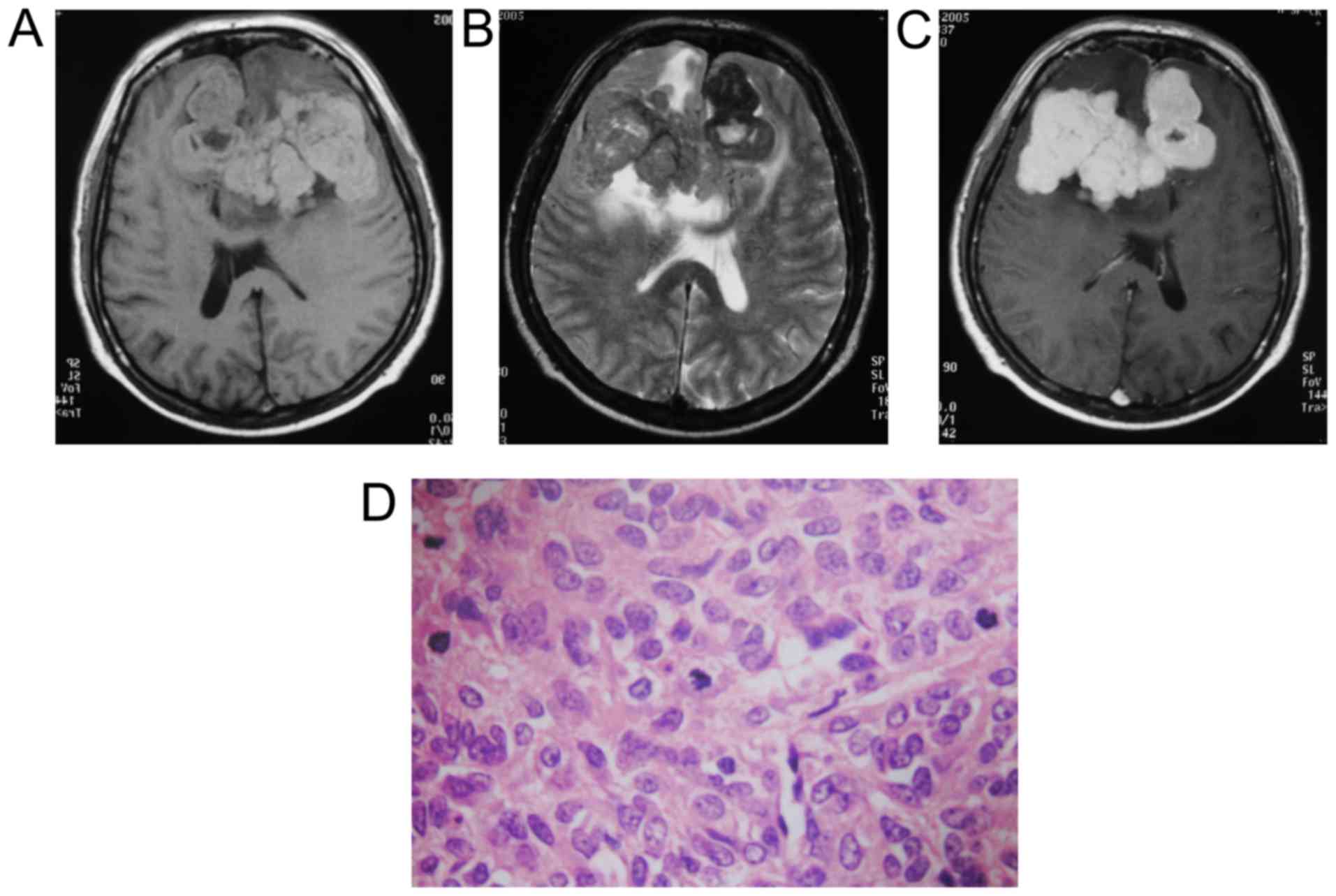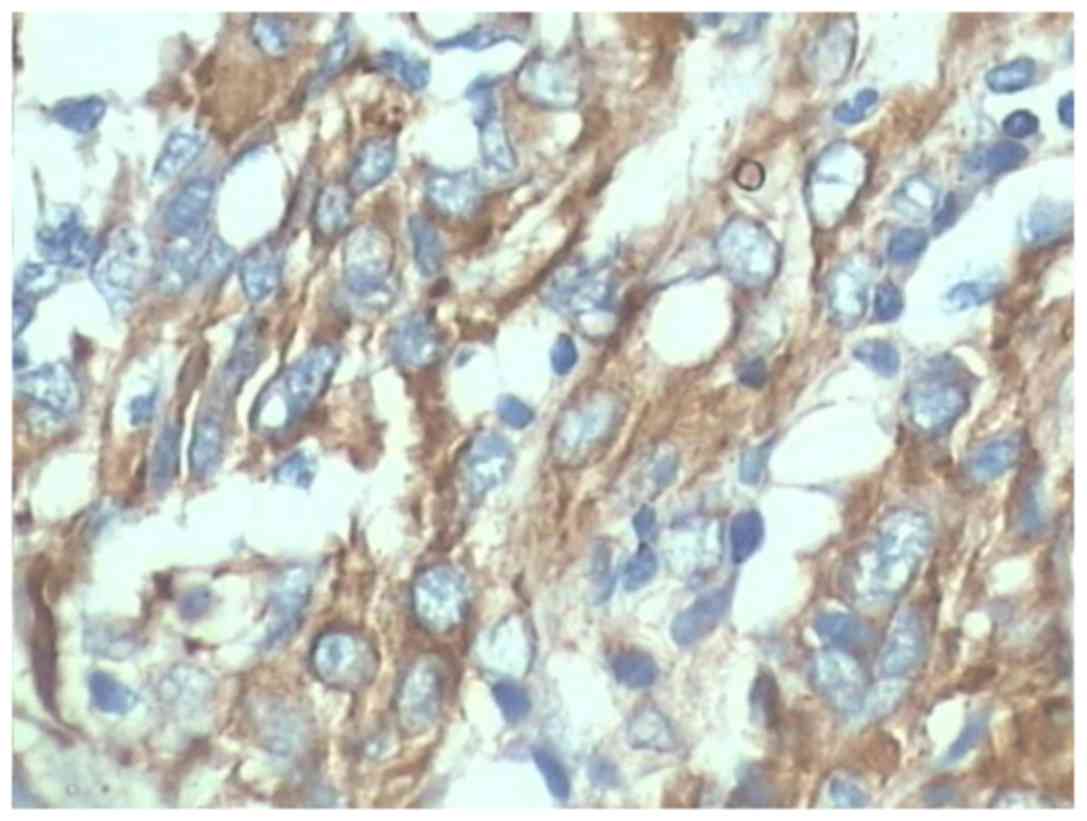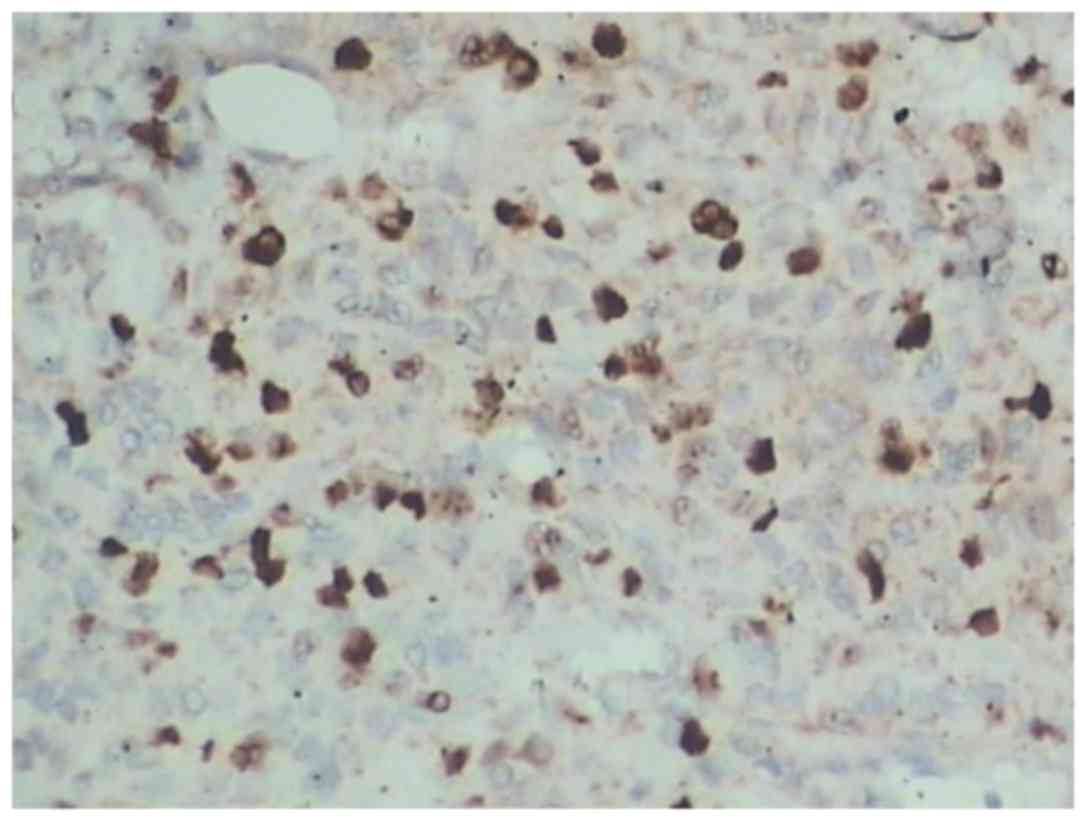MRI features of intracranial anaplastic hemangiopericytoma
- Authors:
- Published online on: March 13, 2017 https://doi.org/10.3892/ol.2017.5853
- Pages: 2945-2948
-
Copyright: © Bai et al. This is an open access article distributed under the terms of Creative Commons Attribution License.
Metrics: Total
Views: 0 (Spandidos Publications: | PMC Statistics: )
Total PDF Downloads: 0 (Spandidos Publications: | PMC Statistics: )
Abstract
Magnetic resonance imaging (MRI) features of intracranial anaplastic hemangiopericytoma (AHPC) were analyzed. The pathological examination showed that there was a great number of irregularly arranged tumor cells with nuclear atypia, and mitotic properties were commonly seen providing support for clinical staging, therapy and prognosis judgment. Eighteen cases of intracranial AHPC proved by operation and pathology were analyzed retrospectively. Both plain and enhanced MR scans were performed and the results were compared with pathology in all cases. In all 18 cases, the tumor was positioned in the cortex; in 12 cases, it was located in the frontal falx and in 3 cases, it was located in the parietal falx. In 2 cases, the tumor was located in the middle cranial fossa, and in 1 case, it was located in the cerebellar hemispheres. Thirteen of the 18 cases showed mixed hyper‑iso signal intensity with cortical grey matter, and the other 5 cases were isointense in the cortical grey matter on T1‑weighted images. Fifteen of the 18 cases showed heterogeneous hyper‑iso signal intensity, and the other 3 cases were isointense on T2‑weighted images. Fifteen of the 18 cases showed heterogeneous enhancement in contrast‑enhanced T1‑weighted images. Our data show that, because intracranial AHPC has specific features on MRI, it could be very useful for its clinical diagnosis.













